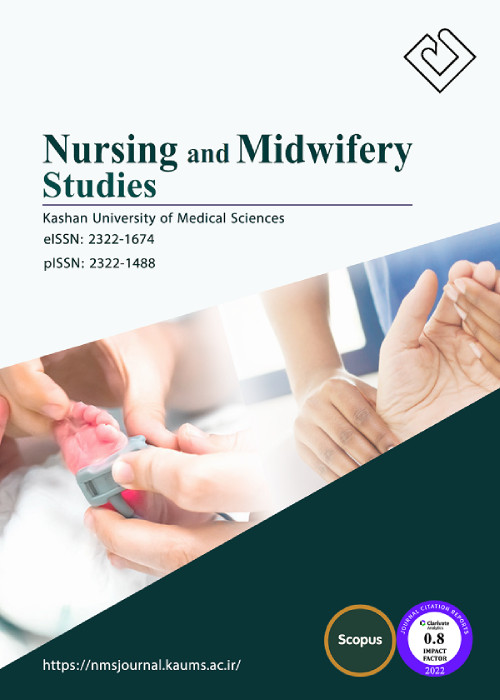"Right to the City" theory from the perspective of geriatric nursing
Many articles published in this esteemed journal are related to aging issues such as physical resilience,[1] fear of falling,[2] functional independence and life satisfaction,[3] and social health[4] of older adults. These issues, which greatly affect the social participation and health of older adults, are largely related to city conditions and structures.Sociality is one of the inherent human characteristics. Active participation in society and human relationships necessitate being part of a community. Nowadays, most people live in cities. It is crucial to uphold principles of justice within urban spaces to fulfill people's social needs.[5] Numerous theories have proposed in this field. One such theory is the "right to the city". The right to the city theory refers to the entitlement of every individual residing in a city to enjoy citizenship rights within the framework of urban spaces. This theory encompasses various social, economic, and political dimensions. This idea initially introduced by Henri Lefebvre in 1968, based on collective urban demands.[6] The components of the right to the city theory include the right to utilize urban spaces (such as physical access, control, and ownership of space, and urban vitality) and the right to participate (including urban decision-making, urban organization, and the production of space/right to urban citizenship). Implementing the theory of the right to the city can lead to significant outcomes such as security, employment, justice, social participation, and the preservation of human dignity for all individuals.[7]This theory aims to address social inequalities within cities under the influence of capitalism. According to this theory, the city is a social structure in which citizens possess rights. Therefore, cities should designed in a way that enables all members of society, regardless of their gender, age, social or economic status, to access available facilities and resources, including urban services, housing, and public spaces. The theory emphasizes the inclusion of all members of society, particularly vulnerable groups. Upholding civil, social, and human rights serves as the central theme of this theory. Latin American urban planners were the first to legalize this concept.[8] Among the vulnerable groups that make up a significant portion of urban populations today are older adults.In response to the growing population of older adults, primarily residing in cities, the concept of age-friendly cities introduced by the World Health Organization (WHO) in 2007. According to the WHO, an age-friendly city encompasses open spaces and public buildings, transportation, housing, social participation, social respect and acceptance, civic participation and employment, communication and information, social support, and health services.[9] The components of an age-friendly city overlap with those of the right to the city theory. However, age-friendly cities specifically focus on older adults and address their unique needs and limitations. Geriatric nursing aims to provide nursing services in various physical, psychological, and social aspects to older adults, supporting their overall well-being. Increasing social participation is a vital indicator of social health among the older adults, as it can significantly affect their resilience and self-esteem.[10] From the perspective of geriatric nursing, achieving cities with age-friendly standards can viewed as part of realizing the goals set forth by the right to the city theory. Both concepts strive to reform cities to achieve social justice, equitable access, and non-discrimination, thereby combatting ageism.[7] However, it is important to note that the right to the city theory encompasses a broader range of individuals in society, pursuing broader political and social goals. Justice, autonomy, and dignity are among the most important ethical principles for older adults, which can significantly influence their quality of life.[11] Environmental characteristics of a city, including physical accessibility to essential locations, environmental safety, adequate recreational and welfare facilities, and affordability, are key requirements that contribute to active aging. If older adults perceive the city environment as unsafe or unsuitable, or if they have negative experiences of community engagement, they may gradually withdraw and become socially isolated, preferring to stay at home.[12]Despite several decades having passed since the introduction of the right to the city theory and the concept of age-friendly cities, these ideas have not thoroughly discussed in an interdisciplinary manner within urban studies. Many of their associated goals have not yet fully realized. Consequently, there appears to be a significant gap between theory and practice, reflecting the persistence of urban disparities and social inequalities affecting the older adults and other age groups.[7]What is clear is that both the right to the city and age-friendly city concepts necessitate the implementation of interdisciplinary policies and actions. Reforming cities to align with these concepts requires the active participation of stakeholders in decision-making processes, interdisciplinary consensus among researchers, and governmental support. Geriatric nurses can play a pivotal role in facilitating successful aging by providing guidance to entities responsible for older adults’ affairs, such as municipalities and welfare organizations. Additionally, establishing dedicated associations for older adults and promoting their active participation in artistic, cultural, and sports activities can contribute to creating a suitable platform for achieving age-friendly cities. Raising awareness about citizenship rights and generating public demand can also expedite the realization of positive changes.
aging , Nurse , Geriatric Nursing , City
- حق عضویت دریافتی صرف حمایت از نشریات عضو و نگهداری، تکمیل و توسعه مگیران میشود.
- پرداخت حق اشتراک و دانلود مقالات اجازه بازنشر آن در سایر رسانههای چاپی و دیجیتال را به کاربر نمیدهد.


